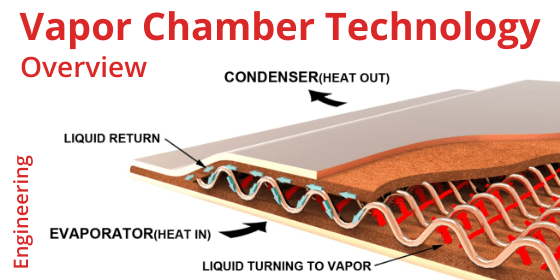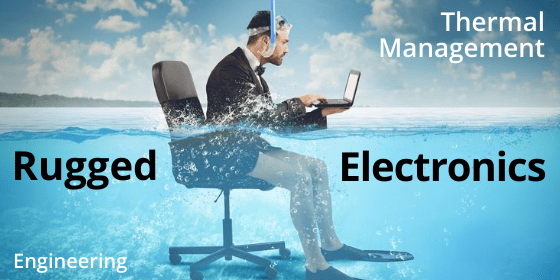Custom Heatsink
Celsia is a US headquartered custom heatsink manufacturer with design and production facilities in Taiwan. We specialize in heatsinks using either heat pipes or vapor chambers. From our founding, we recognized that customers needed the rigorous quality control processes of a US company without the associated high cost or long lead times. In recent years, we’ve customized over 2.5 million heatsink solutions for a global customer base.
Services
Custom Heatsink Design
Our design process begins with a no-cost feasibility evaluation of the proposed vapor chamber or heat pipe heatsink design. Modeled in Excel and usually completed with a few days, this first pass analysis provides a clear indication of the advantages of a two-phase heatsink assembly.

Custom Two-Phase Heatsink Validity Analysis
Next, a CFD model is completed in FloTherm and sent to the customer for integration into a larger system level model. After optimization cycles, the project moves to the heatsink prototype phase.

Heatsink FloTherm CFD Model
Heatsink Prototypes
While CFD analysis drastically reduces heatsink design iterations, prototype testing is always recommended to validate thermal, shock and vibe, and fit requirements. Because it’s a custom heatsink project, soft tooling is usually required. Plan on 4-8 weeks from final design to completed prototype.
Custom Heatsink Manufacturing
Celsia manufactures its heatsinks in a state of the art, ISO certified, facility near Taipei, Taiwan. Here, vapor chamber and heat pipe heatsinks are designed, manufactured and assembled into a complete assembly. Celsia tests every heat pipe and vapor chamber for thermal performance and structural integrity AND it burns-in every completed heatsink assembly and tests for thermal performance.
Related Links
Applications
Regardless of industry segment, mechanical and electrical engineers must contend with cooling electronics that likely fall into one, or more, of three categories: space constrained enclosures, devices used in rugged conditions, and systems with high heat flux electronics.
Heatsinks for Space Constrained Enclosures
When thinking about custom heatsinks designed for space constrained electronic enclosures, one probably envisions handheld devices almost to the exclusion of all else. We think of them as any device, regardless of size, where electronics are packed very tightly within a given space. Achieving thermal goals within cramped spaces often requires a custom heatsink design where the fin stack (condenser) that is remote from the heat source and/or one that is capable of dissipating heat from multiple heat sources. Moreover, weight is often a key design goal.
Whether it be for mobile communications systems, embedded computers or handheld devices, heat pipes and vapor chambers incorporated into our custom designed heatsinks can dramatically improve thermal performance, even in severely cramped enclosures. When compared to solid metal heatsink designs, custom two-phase heatsinks can offer temperature improvements at the semiconductor interface (T-case) as high as 30-50%, allowing engineers to increase processor computational speed while meeting system level thermal goals.
The examples below illustrate how heat pipes and vapor chambers can be used in space constrained environments.

Custom Heatsinks: 7mm Tall Sink for Telecom Application & Small Form Factor PC Heatsink
Custom Heatsinks for Rugged Electronics
Vapor chamber and heat pipe designs have proven effective for both military and industrial applications where electronics are exposed to rugged conditions – from extreme temperatures and wet or dusty environments, to situations where components are subject to repeated shock or exposure to corrosive substances.
Heatsinks using two-phase devices can withstand repeated freeze/thaw cycles, are designed to perform well with changes to orientation and operate effectively in high ambient temperatures. Celsia works with both packaging and thermal engineering teams to ensure the highest level of efficiency and survivability for both commercial grade and rugged electronics in harsh environment applications.
The examples below illustrate how two-phase devices can be used in rugged environments.

Custom Heatsinks Rugged Electronics: Outdoor Enclosure & Aero Defense
Related Links
Heatsinks for High Heat / High Heat Flux Devices
Many electronics engineers would consider heat fluxes of greater than 20 W/cm2 to be high. For power electronics engineers, the initial figure is probably above 75 W/cm2. When properly designed, and incorporated into a custom heatsink, both heat pipes and vapor chambers can be used in applications where power density approaches 500 W/cm2, although this is far from typical. At Celsia, most of the higher heat flux challenges we see are in the 35-80 W/cm2 range but with cooling challenges that are compounded by cramped space, low/no airflow, and/or the requirement to operate in high ambient temperatures.
Celsia custom heatsink designs are often required to work under high localized thermal loads using unique evaporator systems to reduce thermal resistance and increase power handling capabilities. These heatsink design can compete with pumped liquid systems.
The example below illustrate how two-phase devices can be used in high heat flux applications.

Custom Heatsink for High Heat Flux Application







